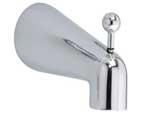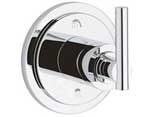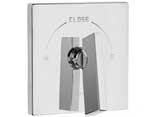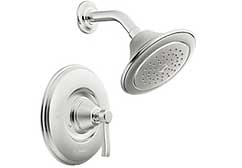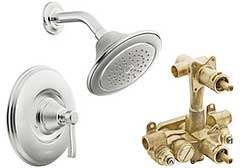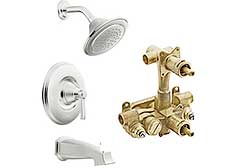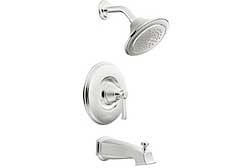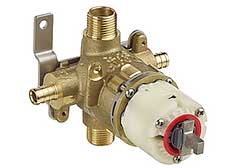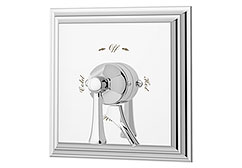Buying Guide
Shower Fixture FAQs
We Have Answers for Your Questions about Shower Fixtures and Faucets
Bathroom remodels can be as extensive as a full-on gut and rebuild or as easy as a change in shower, tub, and sink fixtures. Knowing a little about the different types of fixtures used in the bathroom will help get you started on planning what items you need to update your bathroom with a new look and how much you will need to budget for the project. To assist you in understanding the basics of bathroom plumbing, we've answered a few questions customers frequently ask when they are shopping for tub and shower fixtures.
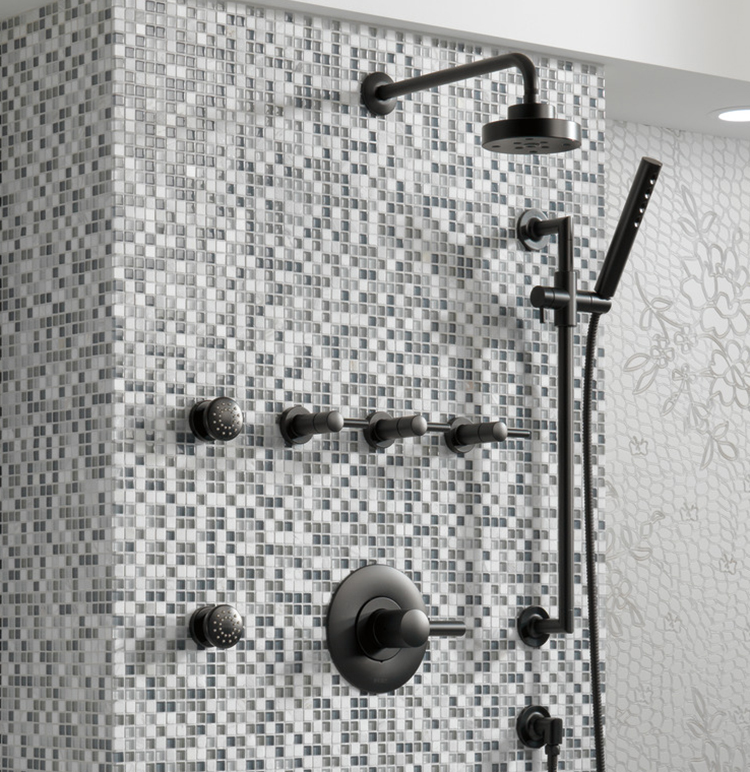
Learn the basics of tub and shower plumbing.
What is a shower diverter?
As the name implies, a shower diverter redirects or diverts the flow of water from one application to another. If your bathroom has a combination tub and shower unit, your bath fixtures will use a diverter to redirect the flow of water from the bathtub spout to the shower head when the water is turned on. There are four main types of diverters:
How much does it cost to replace a diverter?
The cost to replace a diverter can vary widely depending your region and on the factors involved in the project such as the tub model, faucet configuration, and trim design. Some diverters can be replaced from the tub side like a drain plug. Some you need to access outside of the tub. Others you need to go through an adjacent wall or from an underlying ceiling.
A minimum plumbing charge could be from $75-$150 and run up to about $300 not including any drywall repair or repainting if the plumber/contractor has to cut through a wall to access the valve. If this is the case, adding a maintenance cover plate on the wall will make it cheaper and easier for future repair access.
Can a tub and shower faucet be used just for a shower?
Although it is easier and more cost effective to use a fixture designed with only a shower head control, you can use a tub and shower faucet in a shower-only installation. Most tub and shower combination faucets can be installed in a shower without using the tub spout. If you do not wish to use the tub function, you can plug the outlet for the tub spout on the valve and not install the spout on the tub wall. Check with the manufacturer's installation manual to ensure the faucet trim allows this.
How much does a shower faucet cost?
The range of prices in plumbing fees and faucet trims can vary widely. On average, the cost to replace a shower faucet can run from $400 - $700. Installing it yourself will bring the cost down and selecting higher quality fixtures can increase the price as will installing more complex shower systems with multiple function and spray options.
What is shower trim?
The shower trim is the finished fixture that is mounted on the wall can include the shower control dial, the shower arm and head, tub spout, and a handshower. The most basic trim kit will include the outer cover for the shower control. A shower trim kit usually also includes a shower head and arm. Tub and shower kits also include the tub spout. Trims including a handshower option are also available.

The shower trim is the finished fixture that is mounted on the wall. If no tub spout is needed, look for “shower only” trim. If a tub spout is necessary, look for a tub and shower trim kit.
All trim kits need to be used in conjunction with the rough-in valve that is installed behind the wall or under the deck on tubs. Some manufacturers will offer the trim kits with or without the valves included. If you are replacing existing trim with the same brand that uses the same type of valve, you can replace the outer faucet trim without having to install a new valve.
What is a shower valve?
The shower valve or rough-in valve is the brass plumbing component that allows the shower fixture to function. It is also called a mixing valve since it connects the hot and cold water lines and mixes them to create a comfortable warm temperature. Once the hot and cold water is blended, the shower rough-in valve sends it out to the shower head or tub spout. It is installed behind the wall and has outlets that extend through the wall to connect it to the trim. Each manufacturer uses its own valve design which may be universal for all that manufacturer's fixtures. However, generally a new rough-in valve is needed if you are installing trim from a manufacturer that differs from your existing shower fixtures.
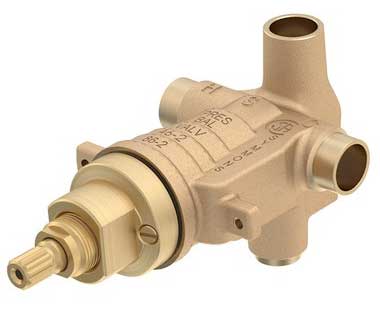
The shower valve or rough-in valve is the brass plumbing component that allows the shower fixture to function.
There are two main types of shower valves: pressure balancing and thermostatic. They differ in how they control temperature fluctuations in the system. A pressure balancing valve is designed to supply water at a nearly constant temperature even when there are pressure changes in the hot and cold lines. This means that when a toilet is flushed or water is needed in other application such as a washing machine or at a sink within the plumbing system, the water temperature would not suddenly become scalding hot.
A thermostatic shower valve regulates the water temperature via a wax thermostatic unit that maintains a constant preselected water temperature even after turning off the shower. The preselected shower temperature helps reduce the risk of accidental scalding.
How do you replace bathtub fixtures?
If your tub spout and tap handles are worn out or outdated, it's time to install new fixtures. Replacing your bathtub faucet is easier than you think. Here are some basic steps to help you remove your existing fixtures and install new.
- The first step is to turn off the water supply to your bathtub faucet. Open the faucet to drain out any residual water. Have a bucket and some rags handy in order to clean up any water spills or leaks.
- If you are changing out the handles, you will need to remove them and access what type of stems you have. The two basic types are washerless or a type with washers. A washerless faucet has one handle that rests on top of a metal plate and controls the mixing of hot and cold water with one handle. A washer-type faucet has two or three handles. Two handles will control the hot and cold water, the third will act as a diverter.
- Unscrew the screws that attach the handles. They will either be concealed under a decorative cover on the top of each handle or exposed for easier access. Remove the handles to expose the valve and unscrew the entire stem from the bathroom pipes. The exposed pipe will either have male (exterior) threads or female (interior) threads. You will need to buy a replacement fixture with the same type of threads.
- Access the condition of the stems and replace them or the washers if they are worn.
- Remove your bathtub spout from the wall. If you have set screws on the top or bottom of the spout, you have a slip-on style which will slide off easily once the set screw is removed. If there is no set screw, the spout is a screw-on style. Rotate the spout counter-clockwise to remove it. If needed, hold it firmly but carefully with a wrench during this step.
- Inspect the condition of the pipe extending from the wall. Clean off any deposits or build-up if needed. If the pipe is free of rust or cracks, it will not need to be replaced. Measure how far it extends out from the wall to help determine the size replacement spout you will need.
- Make sure the new faucet has the same measurements as the old and uses similar connections.
- Wrap the exposed threads on the new faucet or bathtub pipe with Teflon tape to create a tight seal on the connections to prevent leaks.
- Find a suitable replacement that will fit the type and size of your existing plumbing or buy whatever fittings you need to make a secure connection between the new spout and your piping. Tub spouts come in diverter and non-diverter models. If your old spout has a diverter, make sure you buy a new spout that also has a diverter.
- Install the new spout and handle following the steps outlined in the manufacturer's installation directions. Make sure your connections are secured and sealed with plumber's tape or putty.
- Turn the water back on and test the faucet to see if the spout or handles leak. If it leaks, check the connection points to make sure they are tight enough before trying again.
For more in-depth advice on what to look for when shopping for a bathtub or shower faucet, check out How to Choose Your Bathtub and Shower Faucets in our Advice & Ideas section.

